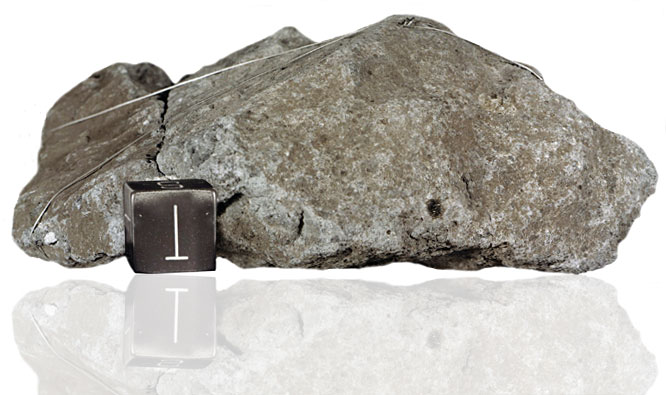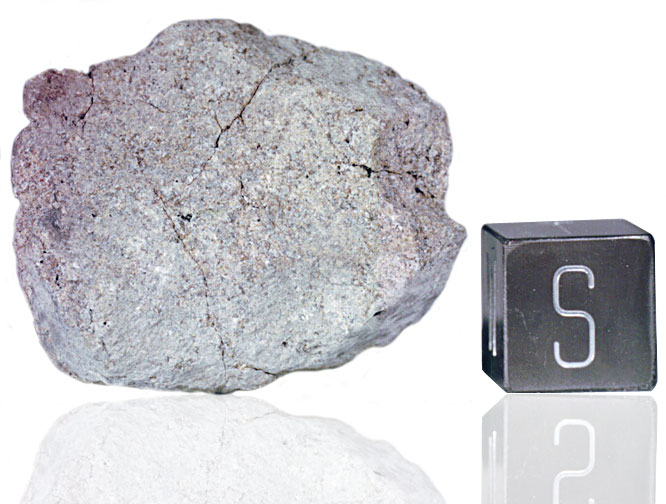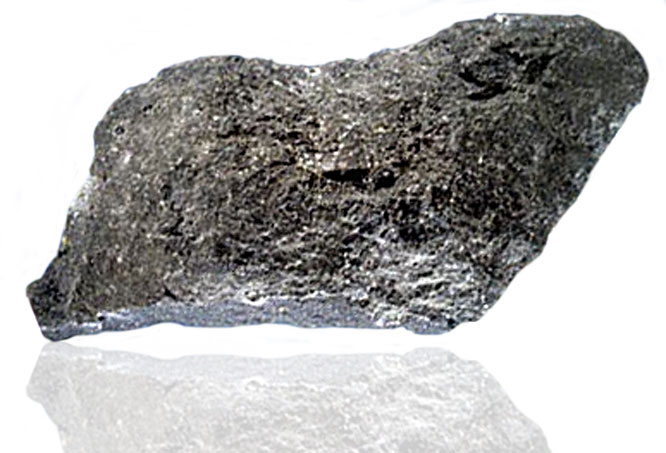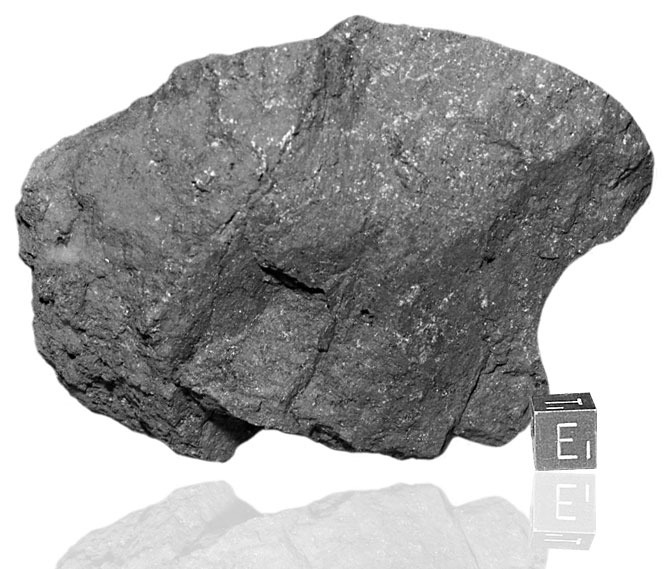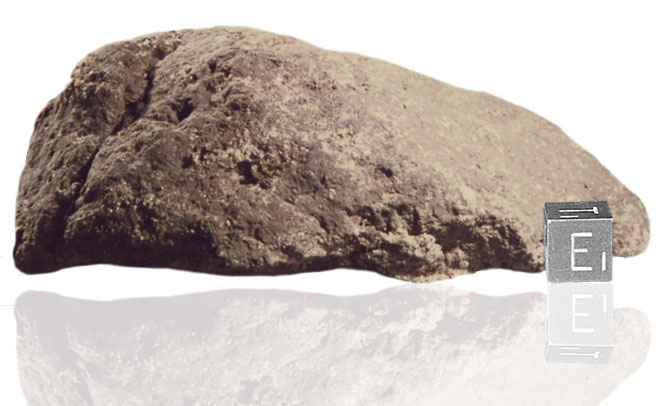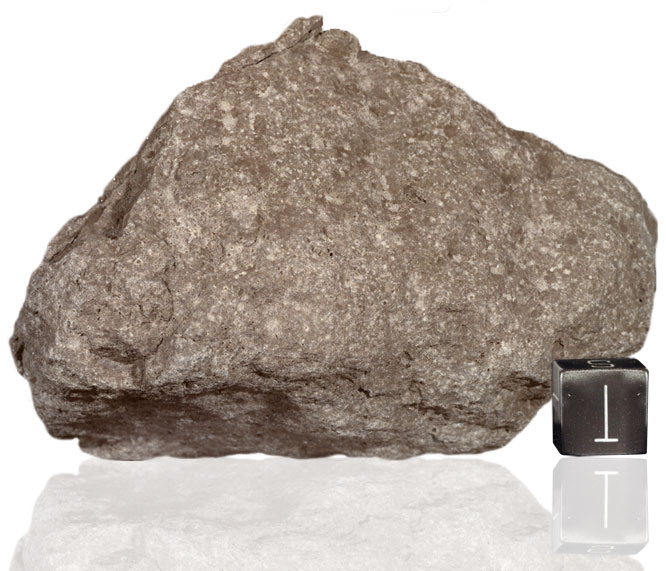
Fact sheet
Sample 14310 appears to be a fine grained crystalline igneous basalt but its chemistry reveals it to be derived from a lunar soil that has been welded into a rock by shock melting during a meteorite impact. It may have been a clast within the Fra Mauro formation, which is an impact crater ejecta blanket close to the landing site of Apollo 14. The rock has high nickel and iron contents as well as Fe-Ni-P-S melt globules indicating that it is not of a simple igneous origin although superficially it resembles basalt. It was collected at Station G during the Apollo 14 mission.
The thin section shows that it is fine-grained feldspathic basalt with intersertal texture consisting of lath-like plagioclase and anhedral pyroxene. Many large (2 millimetre) blocky phenocrysts of plagioclase are found in the interlocking network of randomly-oriented laths (~200 micron) of plagioclase. Pyroxene is found interstitial to the plagioclase framework. The cores of pyroxene crystals are orthopyroxene which zone to pigeonite compositions. Augite sometimes forms epitaxial overgrowths on the pigeonite. Ilmenite occurs in the interstices and is intergrown with the outer margins of the pyroxene.
Further details of this and other Apollo samples are here: http://curator.jsc.nasa.gov/lunar/

